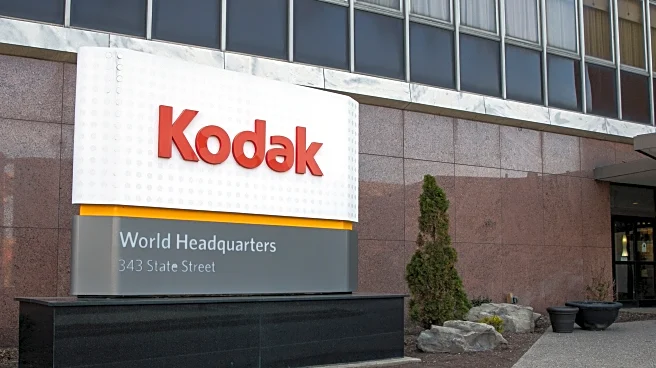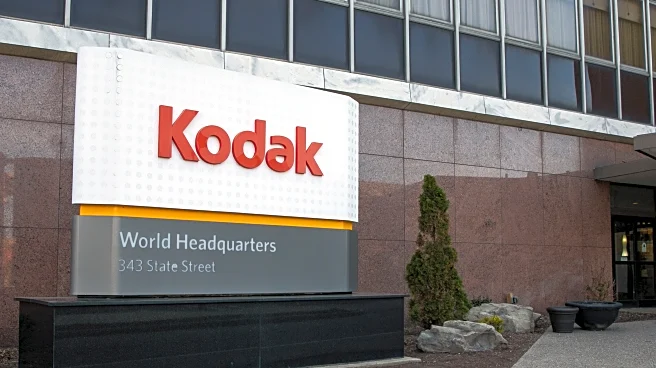Rapid Read • 8 min read
Eastman Kodak, a 133-year-old photography company, has issued a warning to investors about its uncertain future. The company revealed in its latest earnings report that it lacks committed financing and available liquidity to meet approximately $500 million in upcoming debt obligations. This situation has raised substantial doubts about Kodak's ability to continue operations. In an effort to generate cash, Kodak plans to halt payments for its retirement pension plan. Despite these challenges, Kodak's CEO, Jim Continenza, stated that the company is making progress against its long-term plan. Kodak's shares fell over 25% in midday trading following the announcement.
AD
Kodak's financial difficulties highlight the challenges faced by legacy companies in adapting to modern technological advancements. Once a dominant player in the photography industry, Kodak's inability to capitalize on digital technology led to its bankruptcy filing in 2012. The potential closure of Kodak could impact various stakeholders, including employees, investors, and industries reliant on its products, such as the movie industry. The company's struggles underscore the importance of innovation and adaptation in maintaining business viability in rapidly changing markets.
Kodak is exploring options to manage its debt, including amending, extending, or refinancing its obligations. The company remains confident in its ability to pay off a significant portion of its term loan before it becomes due. Additionally, Kodak aims to expand its business in manufacturing films and chemicals for the movie industry and licensing its brand for consumer products. The company's future will depend on its ability to secure financing and adapt its business model to current market demands.
Kodak's situation raises broader questions about the sustainability of traditional business models in the face of technological disruption. The company's history of innovation, including the invention of the first digital camera, contrasts with its current financial struggles. This case serves as a cautionary tale for other companies about the risks of failing to embrace technological change and the importance of strategic foresight.
AD
More Stories You Might Enjoy











